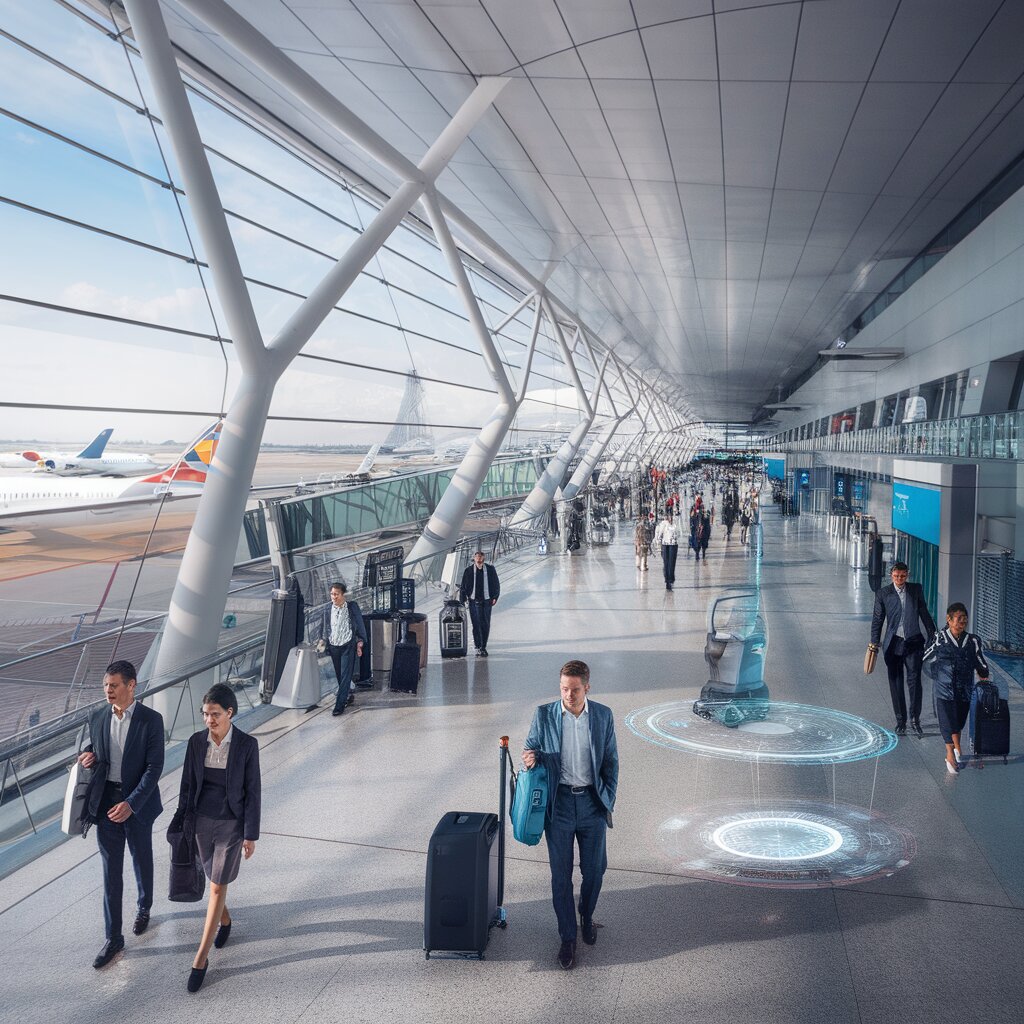Imagine stepping into an airport where everything from the restrooms to the terminal floors gleams with cleanliness. The atmosphere inside is stress-free, making passengers more inclined to consider a first-class upgrade, accessing a luxury lounge, or even starting their holiday shopping early. The secret weapon in this transformed experience? Impeccably clean facilities that serve as the unheralded champions in enhancing the passenger journey. When airports maintain such spotless conditions, travelers tend to be happier, linger longer, and indulge more in their surroundings.
Yet, achieving and maintaining this level of cleanliness in bustling airports is no easy task. With millions of travelers passing through annually, the challenge of keeping expansive spaces clean around the clock is daunting. Airport administrators are under constant pressure to optimize efficiency while ensuring their spaces remain pristine.
The traditional methodologies of airport cleaning are becoming obsolete, prompting a shift toward smarter, more intuitive solutions that can address these rising demands in passenger expectations.
Navigating Unique Challenges
Airports, each with their own operational intricacies and fluctuating passenger volumes, present a distinct set of challenges. Many operate around the clock, necessitating consistently clean and stocked amenities like restrooms, security checkpoints, lounges, and retail areas. Additionally, behind-the-scenes and workforce-specific zones must not be overlooked.
The dynamic nature of airport operations—driven by factors like weather events, global IT outages, and inevitable flight disruptions—adds to the complexity. Increasing passenger volumes can lead to overcrowding faster than physical expansion can accommodate, intensifying the pressure on facilities.
Travelers today expect not just cleanliness, but also diverse amenities and high-speed connectivity. As airports transition to enhance the overall journey for both passengers and employees, janitorial solutions can no longer be relegated to mere cost centers. Instead, integrating cutting-edge technologies into cleaning practices is essential.
Adopting Data-Driven Cleaning
Incorporating data analytics in airport operations, akin to the “Moneyball” approach in sports, has proven effective in revealing hidden efficiencies and improving outcomes. By applying sophisticated analytics, airports can refine cleaning processes and optimize resource allocation.
Connected Cleaning Revolution
Emerging technologies promise to vastly improve operational transparency and efficacy in airport cleaning.
IoT Integration
The Internet of Things (IoT) plays a critical role, offering unprecedented visibility throughout the cleaning process. By deploying IoT-connected devices, airports can gather real-time data that translates into actionable insights. For example, IoT-enabled dispensers in restrooms notify cleaning staff when supplies run low, ensuring timely replenishment and reduced wastage.
In addition, sensors on faucets and toilets can alert staff about leaks or prolonged occupancy, allowing them to address issues proactively rather than relying on routine checks.
Heat Mapping and Resource Management
Utilizing heat maps can pinpoint staff movements and identify areas requiring more attention, optimizing workforce deployment. These maps, commonly used in manufacturing, can help detect bottlenecks and streamline operational workflows within airport facilities.
Passenger Counting Systems
By leveraging IoT-based people counters, airports can accurately measure foot traffic and adjust resource deployment accordingly. For instance, monitoring restroom usage can trigger cleaning processes after a set number of users, ensuring facilities remain in top condition.
Real-Time Feedback Mechanisms
Passenger feedback systems enable real-time reporting of cleanliness concerns, facilitating immediate rectifications and contributing to higher satisfaction levels. These easy-to-use platforms can collect data via touchscreen displays or QR codes.
When combined with AI and task management software, these technologies offer an integrated system that enhances decision-making and operational efficiency within airports.
Key Elements for Success
There is no universal approach applicable to all airports. Solutions must be flexible, scalable, and adaptable to each facility’s specific needs while maintaining high interoperability across systems. Trustworthy data, characterized by its quality and timeliness, is crucial for effective problem-solving and decision-making.
A Visionary Approach to Data
Cloud-based systems provide the flexibility and scalability essential for managing large volumes of data, enhancing data accessibility, and facilitating seamless integration across stakeholder departments. A centralized user interface ensures real-time access to micro and macro-level insights, allowing for rapid adjustments when necessary.
Establishing trust in data management and analysis processes is critical. According to Gartner, organizational trust issues often stem from data quality concerns and regulatory challenges, underscoring the importance of reliable data use for strategic decision-making.
The Human Element in a Tech-Driven World
Even as AI and IoT revolutionize the cleaning paradigm, the human element remains indispensable. The COVID-19 pandemic underscored the essential role of diligent cleaning staff in ensuring safe and sanitary environments. Investing in skilled personnel, equipped with the latest technology, is crucial for operational success.
Ultimately, airports need to embrace a modernized cleaning framework where technology and human expertise converge harmoniously. By doing so, they don’t just promise spotless terminals and facilities, but a new era in the traveler journey—delivered through informed, efficient, and forward-thinking strategies. As the aviation industry evolves, airports must prioritize cleaning smarter, not harder, to keep pace with the ever-changing demands of air travel.


